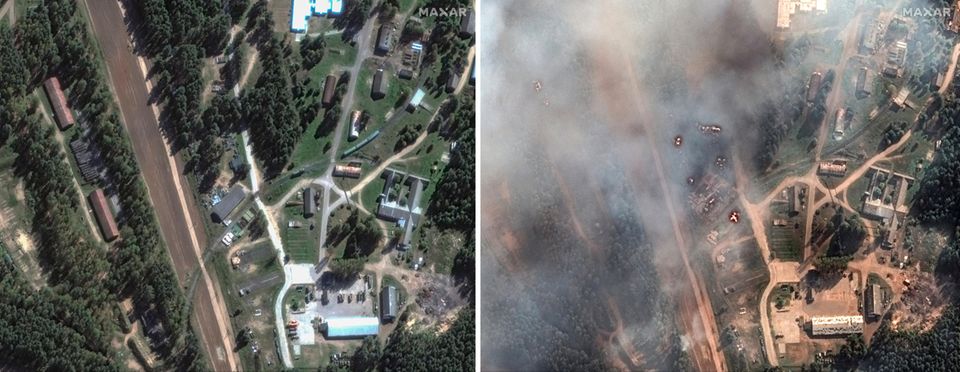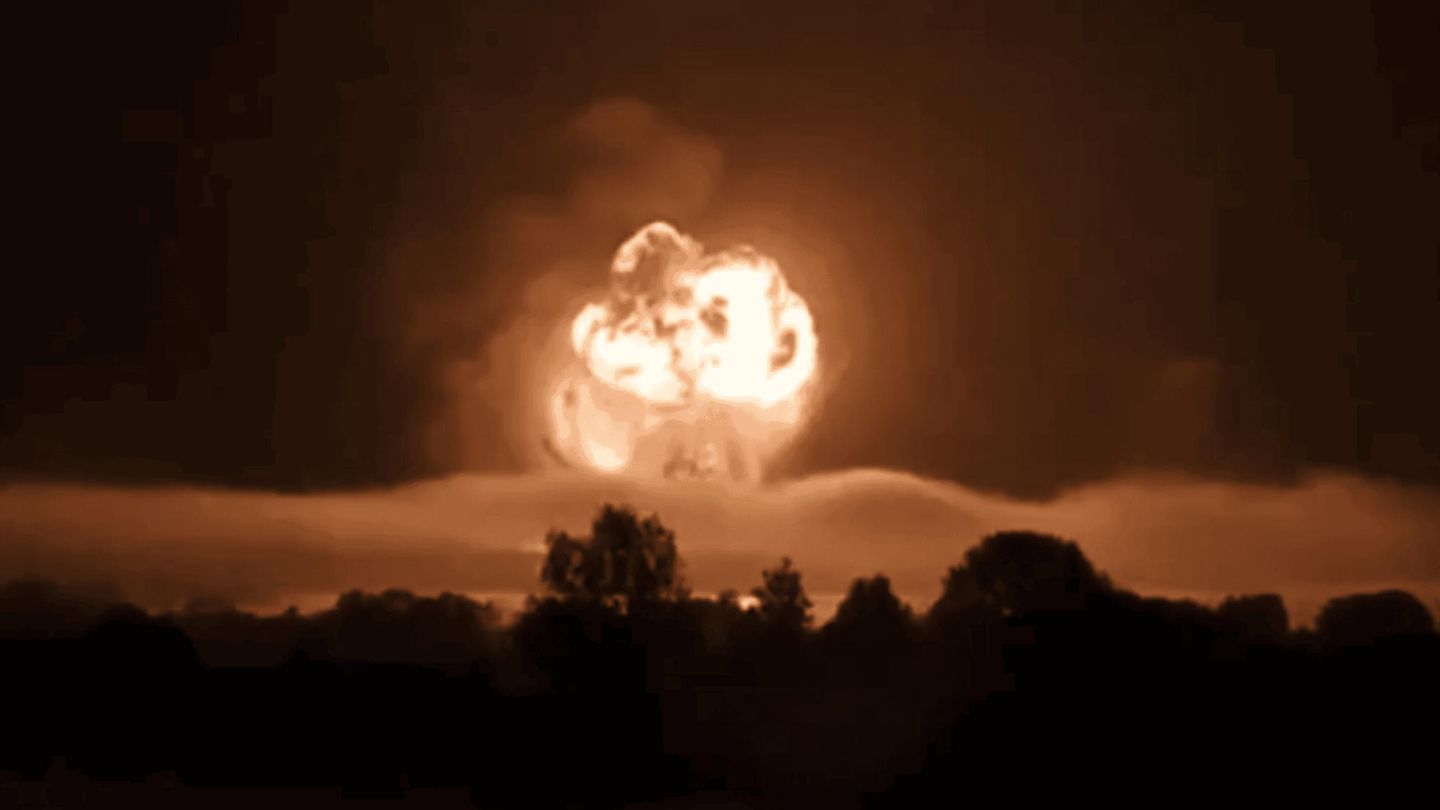analysis
Drones inflicted Russia’s worst defeat since 2022 in recent days, destroying vast amounts of missiles and ammunition in the Russian hinterland.
Things are not going well for free Ukraine in the ground war. In the Donbass, Putin’s troops are pushing the defenders back ever faster. In the region where Kiev has conquered a corner of Russian soil, the Russians have launched a counteroffensive.
But Ukraine has achieved spectacular successes in the strategic air war in recent days. A whole series of large ammunition depots have been attacked and a large proportion of the weapons stored there have been destroyed.
Drone attack on large depot
The attack on Russia’s largest depot in the city of Toropets (Tver region) was the first. The explosions were so heavy that they were recorded by earthquake sensors. In addition, numerous fires broke out in the region, presumably caused by downed drones.

A large number of drones were used in the attack, their number is estimated at around 100. This number overwhelmed the air defenses deployed, allowing the surviving drones to attack the camp.
Iskander and Tochka-U missiles, glide bombs and artillery ammunition are said to have been stored in Toropets. Toropets is located around 480 kilometers from the Ukrainian border and about 400 kilometers west of Moscow. The storage area covered an area of more than five square kilometers.
Further strikes followed. For example, against the camp near Oktyabrsky, also in the Tver region and only 16 kilometers from the camp in Toropets. The depot in Tikhoretsk was also hit. It became known because the ammunition that Russia received from North Korea was temporarily stored there.
It is estimated that the Toropets facility alone can store around 30,000 tons of ammunition. It is naturally impossible to say how many weapons were actually stored in the facilities at the time of the attacks. But the strength of the explosions alone speaks volumes.
Impact on warfare
The attacks on the depots – which may continue – are the strongest blow Putin has suffered since 2022. The amount of artillery ammunition and long-range weapons cannot be easily replaced. The lack of these stockpiles will have a direct impact on the ground war in Ukraine.
The Russian troops are numerically superior and are also operating far more skillfully than at the beginning of the war, but Russian warfare is based centrally on superior firepower. This is evident in the Donbass, but the Kursk operation by the Ukrainians was also contained by the surprised Russians with an almost lavish use of long-range weapons such as the Iskander missiles.
Sanctions against Russia fizzle out
Hopes that sanctions will lead to a collapse in Russian arms production are fading. In fact, the Russians are massively increasing the production of smart weapons that rely on components from abroad. Putin recently admitted that Russia had increased the production of drones.
By comparison, while around 140,000 unmanned aerial vehicles of various types were delivered in 2023, the figure is expected to be 1.4 million in 2024. The attack on the depots is now having a noticeable impact. Unlike the attacks on the oil refineries, which are hurting Moscow primarily financially, the destroyed depots have a direct impact on the course of the war.
Much of the ammunition in Toropets was stored underground. The question arises as to how the Ukrainian drones were able to “crack” the bunkers. The successful attacks on the depots also show how painful strikes against military targets in the Russian hinterland can be. Kiev is thus underlining its desire to be allowed to use long-range weapons from the West in Russia.
Source: Stern
I have been working in the news industry for over 6 years, first as a reporter and now as an editor. I have covered politics extensively, and my work has appeared in major newspapers and online news outlets around the world. In addition to my writing, I also contribute regularly to 24 Hours World.




